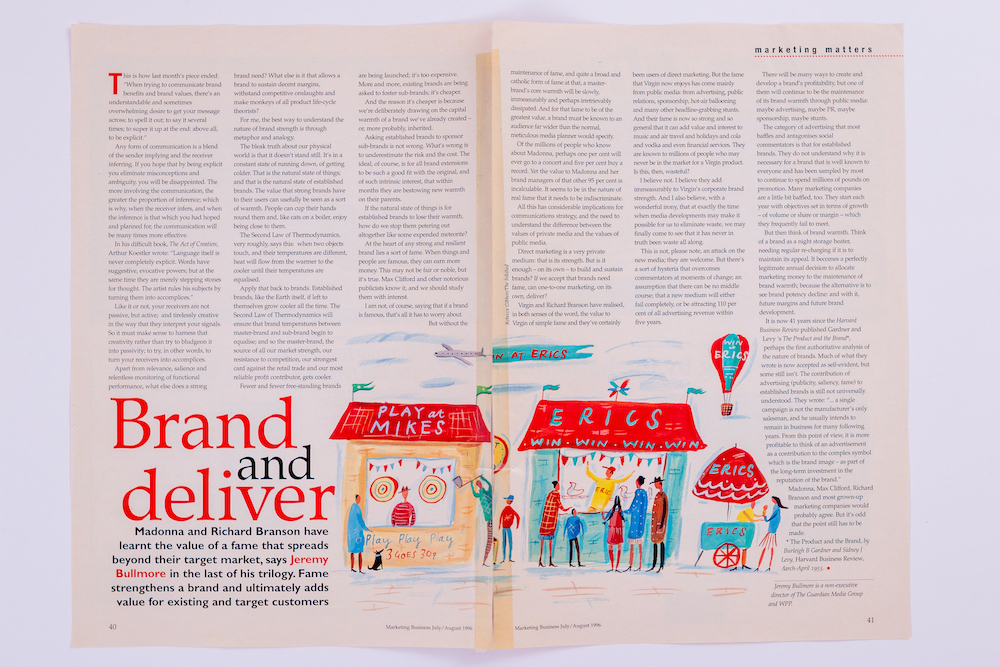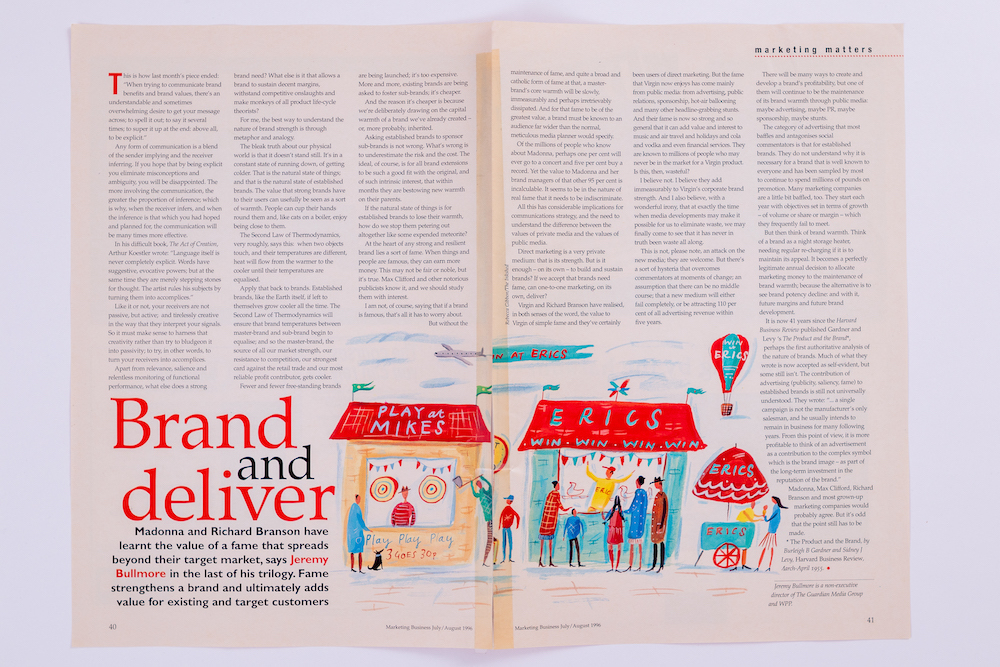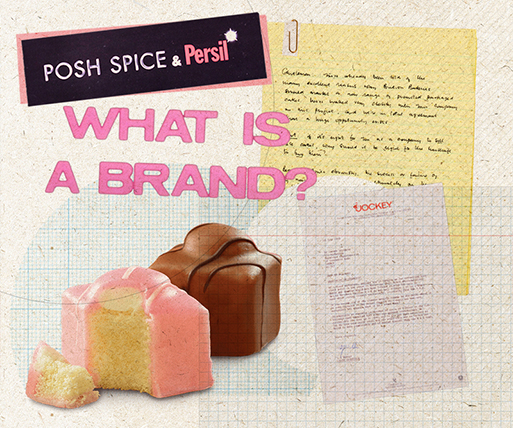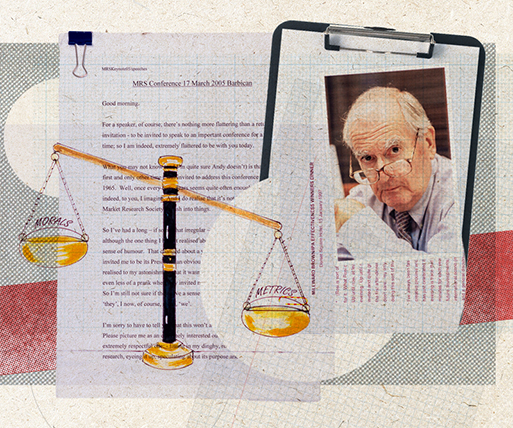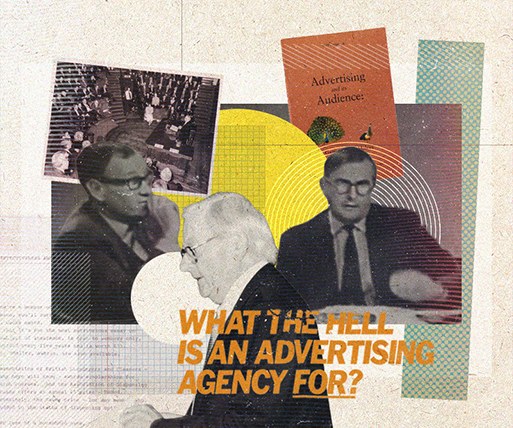Understanding Brands Part 3 – Brand and deliver, 1996
- Date: 1996
- Publisher: Marketing Business
- BRANDS
In these much-quoted features published in May, June and July 1996 Jeremy explores the basics of brands. Part 3 explores the powerful nature of brand fame, and how it adds value, a precursor to the Posh Spice & Persil lecture and essay that he developed a few years later.
Understanding Brands Part 3 – Brand and deliver
When trying to communicate brand benefits and brand values, there’s an understandable and sometimes overwhelming desire to get your message across; to spell it out; to say it several times; to sing it as well as say it; to super it up at the end: above all, to be explicit.
Any form of communication is a blend of the sender implying and the receiver inferring. If you hope that by being explicit you eliminate misconceptions and ambiguity, you will be disappointed. The more involving the communication, the greater the proportion of inference; which is why, when the receiver infers, and when the inference is that which you had hoped and planned for, the communication will be many times more effective.
In his difficult book, “The Act of Creation”, Arthur Koestler wrote: “Language itself is never completely explicit. Words have suggestive, evocative powers; but at the same time they are merely stepping stones for thought. The artist rules his subjects by turning them into accomplices.”
Like it or not, your receivers are not passive, but active; and tirelessly creative in the way that they interpret your signals. So it must make sense to harness that creativity rather than try to bludgeon it into passivity; to try, in other words, to turn your receivers into accomplices.
Apart from relevance, salience and relentless monitoring of functional performance, what else does a strong brand need? What else is it that allows a brand to sustain decent margins, withstand competitive onslaughts and make monkeys of all product life-cycle theorists?
For me, the best way to understand the nature of brand strength is through metaphor and analogy.
The bleak truth about our physical world is that it doesn't stand still. It’s in a constant state of running down, of getting colder. That is the natural state of things; and that is the natural state of established brands.
The value that strong brands have to their users can usefully be seen as a sort of warmth. People can cup their hands round them and, like cats on a boiler, enjoy being close to them.
The Second Law of Thermodynamics, very roughly, says this: when two objects touch, and their temperatures are different, heat will flow from the warmer to the cooler until their temperatures are equalised.
Apply that back to brands. Established brands, like the earth itself, if left to themselves, grow cooler all the time. That is the natural state of things. And whenever we ask a brand to add its lustre and authority to sub-brands, line-extensions and variants, we're quite deliberately setting out to drain it of some of the very warmth that made it of value to people in the first place. The Second Law of Thermodynamics will ensure that brand temperatures between master-brand and sub-brand begin to equalise; and so the master-brand, the source of all our market strength, our resistance to competition, our strongest card against the retail trade and our most reliable profit contributor, gets cooler.
Fewer and fewer free-standing brands are being launched; it’s too expensive. More and more, existing brands are being asked to foster subbrands; it’s cheaper.
And the reason it’s cheaper is because we’re deliberately drawing on the capital warmth of a brand we’ve already created - or more probably, inherited.
Asking established brands to sponsor sub-brands is not wrong. What’s wrong is to underestimate the risk and the cost. The ideal, of course, is for all brand extensions to be such a good fit with the original, and of such intrinsic interest, that within months they are bestowing new warmth on their parents.
If the natural state of things is for established brands to lose their warmth, and if they’re constantly being drained still further of that warmth to help further our expansionist ambitions, how do we stop them petering out altogether like some expended meteorite?
At the heart of any strong and resilient brand lies a sort of fame. When things and people are famous, they can earn more money. This may not be fair or noble, but it’s true. Max Clifford and other notorious publicists know it, and we should study them with interest.
I am not, of course, saying that if a brand is famous, that’s all it must worry about. But without the maintenance of fame, and quite a broad and catholic form of fame at that, a master-brand’s core warmth will be slowly, immeasurably and perhaps irretrievably dissipated. And for that fame to be of the greatest value, a brand must be known to an audience far wider than the normal, meticulous media planner would specify.
Of the millions of people who know about Madonna, perhaps one per cent will ever go to a concert and five per cent buy a record. Yet the value to Madonna and her brand managers of that other 95 per cent is incalculable. It seems to be in the nature of real fame that it needs to be indiscriminate.
All this has considerable implications for communications strategy, and the need to understand the difference between the values of private media and the values of public media.
Direct marketing - database marketing, one-to-one marketing, relationship marketing - is on the increase; and deservedly so, since it’s being closely monitored and it’s clearly earning its keep. It does much to personalise the brand/consumer relationship; and it also goes a long way towards the elimination of waste, since the money is spent on developing existing relationships, not broadcasting wildly to the uninterested majority.
Direct marketing is a very private medium: that is its strength. But is it enough - on its own - to build and sustain brands? If we accept that brands need fame, can one-to-one marketing, on its own, deliver?
Virgin and Richard Branson have realised, in both senses of the word, the value to Virgin of simple fame and they’ve certainly been users of direct marketing; but the fame that Virgin now enjoys has come mainly from public media: from advertising, public relations, sponsorship, hot-air ballooning and many other headline-grabbing stunts. And their fame is now so strong and so general that it can add value and interest to music and air travel and holidays and cola and vodka and even financial services. They are known to millions of people who may never be in the market for a Virgin product. Is this, then, wasteful?
I believe not. I believe they add immeasurably to Virgin’s corporate brand strength. And I also believe, with a wonderful irony, that at exactly the time when media developments may theoretically make it possible for us to eliminate waste, we may finally come to see that it has never in truth been waste all along.
This is not, please note, and attack on the new media; they are welcome. But there’s a sort of hysteria that overcomes commentators at moments of change; an assumption that there can be no middle course; that a new medium will either fail completely, or be attracting 110 per cent of all advertising revenue with five years.
It is true that no successful new advertising medium has ever left existing media undisturbed; but neither has any existing medium ever been totally displaced.
There will be many ways to create and develop a brand’s profitability, but one of them will continue to be the maintenance of its brand warmth through public media: maybe advertising, maybe PR, maybe sponsorship, maybe stunts.
The category of advertising that most baffles and antagonises social commentators is that for established brands. They do not understand why it is necessary for a brand that is well known to everyone and has been sampled by most to continue to spend millions of pounds on promotion. Many marketing companies are a little bit baffled, too. They start each year with objectives set in terms of growth - of volume or share or margin - which they frequently fail to meet.
But then think of brand warmth. Think of a brand as a night storage heater, needing regular re-charging if it is to maintain its appeal. It becomes a perfectly legitimate annual decision to allocate marketing money to the maintenance of brand warmth; because the alternative is to see brand potency decline: and with it, future margins and future brand development.
In 1955 the Harvard Business Review published Gardner and Levy’s “The Product and the Brand”: perhaps the first authoritative analysis of the nature of brands. Much of what they wrote is now accepted as self-evident, but some still isn’t. The contribution of advertising (publicity, saliency, fame) to established brands is still not universally understood.
They wrote: “…a single campaign is not the manufacturer’s only salesman, and he usually intends to remain in business for many following years. From this point of view, it is more profitable to think of an advertisement as a contribution to the complex symbol which is the brand image - as part of the long-term investment in the reputation of the brand." (Their italics.)
Madonna, Max Clifford, Richard Branson and most grown-up marketing companies would probably agree; but it’s odd that the point has still to be made.
